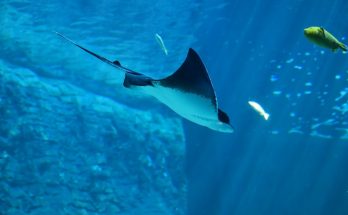A range of advanced technologies are reportedly used by NOAA Fisheries to study protected marine species and their ecosystems enabling scientists to efficiently conduct long-term research in isolated habitats that can be difficult and dangerous to access.
Tracking remote species’ distributions and habitat use are done by the real-time monitoring tools to enable NOAA scientists to understand how populations respond to environmental and human-caused threats and improve our conservation and recovery strategies.
Included in the technologies used by NOAA scientists to study to protect species across the nation are: Uncrewed Vehicles helping scientists efficiently collect critical data about marine species, including population status, movement, health, habitat, and behavior and influences where marine mammals go to forage. Scientists also use uncrewed aerial systems—known as drones—to monitor animals without direct contact to count and measure individual animals, estimate group size, monitor calving or pupping rates, and observe body condition.
As sound is the primary way many marine animals communicate, find food or a mate, and avoid predators, Acoustic Recordings are used by Scientists to “listen in” on marine species such as Archival bottom-mounted recorders, Ship-based towed hydrophone arrays, Drifting recorders
Acoustic recording tags, Near-real time monitoring from acoustic gliders and buoys
NOAA Scientists use these tools to study the behavior, movements, and distribution of marine animals using the unique frequencies and sound patterns made by different species underwater. Acoustic data can help inform protective measures for marine species. his interactive, public data mapping tool helps people understand when and where large whales occur off the East Coast.
Animal Telemetry uses tags with a range of technologies like GPS, acoustic recorders, and video attached to animals to track their movements and gather data about their location, physiology, behavior, and environment and transmitted to researchers via radio, satellite, or acoustic signal. Data is stored in the tags As technologies have progressed, longer lasting tags can now store multi-year data for longer lived species. We can also use miniature tags on smaller animals like juvenile sea turtles and seabirds. Satellite tags are especially useful for monitoring highly migratory species, which can be difficult to track by ship or plane. Another type of tag—acoustic transmitter tags—sends out unique acoustic signals every few seconds that are detected by nearby receivers as the tagged animal swims by and records its location.
Reducing Extinction Risk Through Advanced Technologies
Aiming to speed up major technological advancements that help conserve the nation’s at-risk species and their habitats. NOAA Fisheries launched in 2023, the Advanced Sampling and Technology for Extinction Risk Reduction and Recovery program. With the application of artificial intelligence and machine learning, advanced statistical methods, advanced sampling and ‘omics, uncrewed systems, acoustics, imagery, and additional technologies, this program serves to improve conservation management and reduce regulatory burdens.
Advanced sampling and technologies help us better understand protected species and their habitats and take measures to protect them. Supporting sustainable marine ecosystems boosts U.S. competitiveness and the economy.




